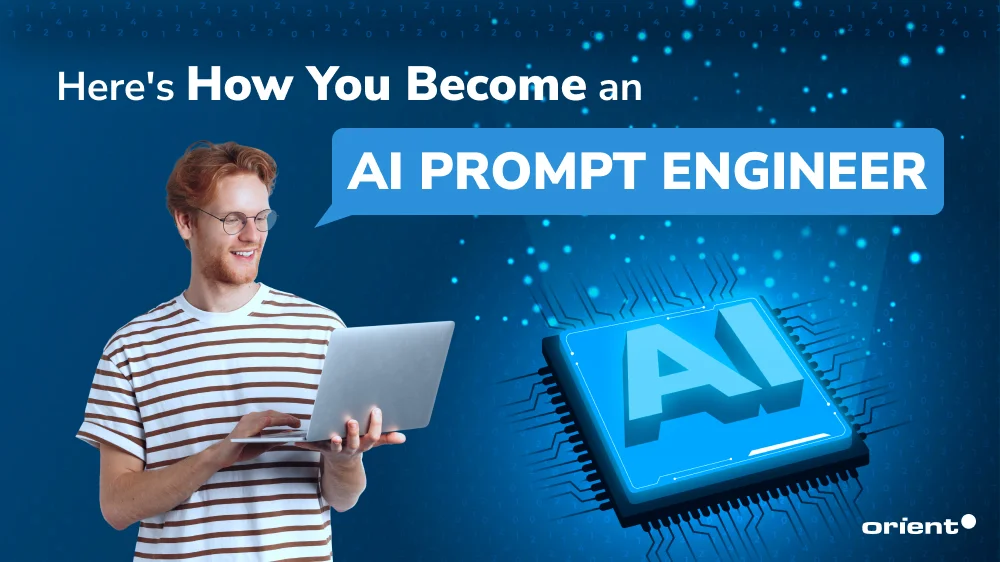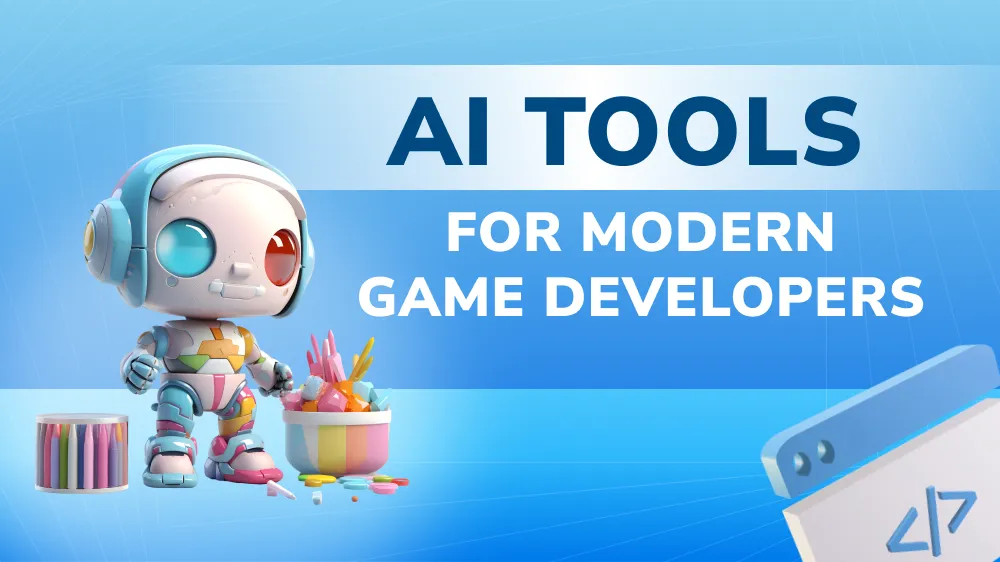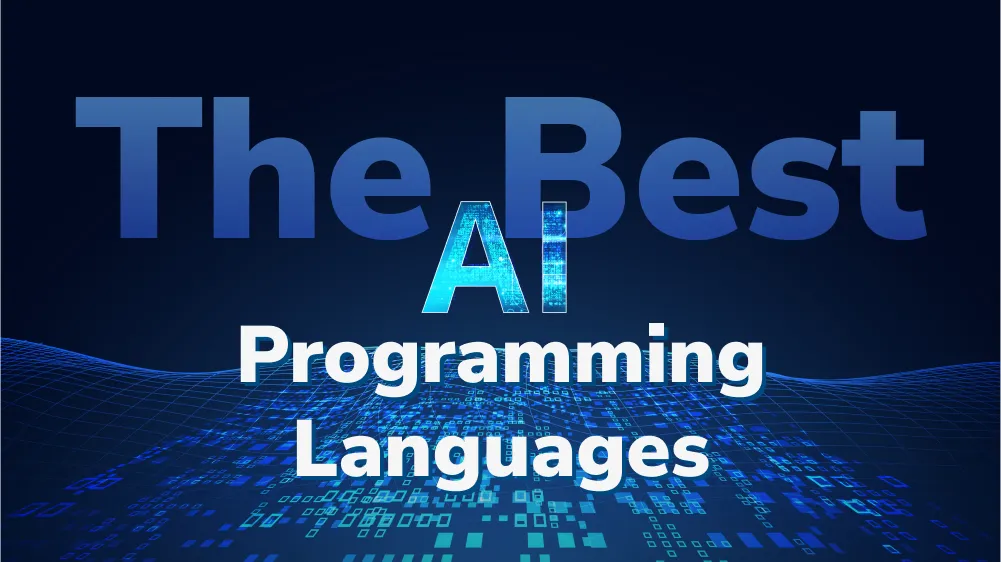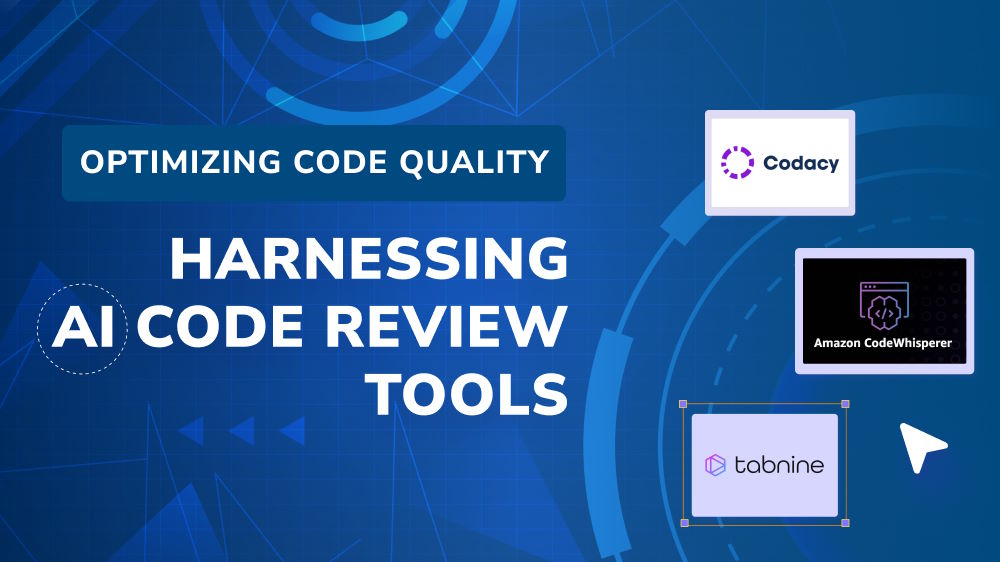Here's How You Become an AI Prompt Engineer

Content Map
More chaptersArtificial Intelligence is experiencing explosive growth - almost any manual task can now be assisted by AI tools. Let’s say you want quick answers to simple questions - feel free to choose between ChatGPT, Gemini, or BingAI. Do you need help with content creation? Jasper or Copy.AI can help you with that. How about impressive images for your copy? DALL·E 3 and Midjourney are great tools to help you achieve this goal.
One of the most exciting fields is Generative AI. All users need to do is enter a prompt, and the AI will most likely provide the user with the desired output. It feels as if machines can think, remember our requests, and provide an informative response.
The popularity of Generative AI tools has created new career paths along the way. One of them is prompt engineering - which might just be the next big thing in the tech world.
While AI prompt engineering is still a rather novel career, with the right approach to the job, you can still kickstart a promising career in this emerging industry. From what prompt engineering actually is, the day-to-day tasks of AI prompt engineers, to the key skills and how to acquire them - this comprehensive guide will provide you with everything you need to know.
Key Takeways:
- AI prompt engineering is an emerging and promising field due to the strong rise of AI tools and adoption.
- Prompt engineering bridges the existing gap between humans and machines, opening up a future where repetitive and manual tasks are effectively assisted by AI tools.
- Whether you are self-learning or taking courses to become an AI prompt engineer, you need to have knowledge of coding, AI and ML, deep learning, and NLP, as well as solid writing and conversational skills.
Terms You Need to Know
Before we dive into the definition of prompt engineering, it helps to first understand what Generative AI and prompt mean.
What Is Generate Artificial Intelligence?
The term “generative artificial intelligence” refers to algorithms that can be utilized to produce new content, including text, photos, audio, code, simulations, and videos. One example of such an algorithm is ChatGPT.
What Is an AI Prompt?
An AI prompt is any type of text, question, information, or code that instructs the AI on the desired response. By modifying the phrasing of your prompt, you can influence the variety of responses the AI provides.
What Is Prompt Engineering?
Prompt engineering is a new discipline that optimizes prompts to use language models (LMs) effectively in various applications and research topics.
Benefits of prompt engineering include:
- Improving the large language models (LLM) capacity when it comes to complex tasks
- Design strong prompting techniques.
- Better understanding LLMs capabilities while also enhancing its safety
- Guides the latest documents, techniques, learning techniques, and specific model prompts. This could also involve references and lectures.
What Does a Prompt Engineer Do?

While any Internet user can enter questions to chat with AI chatbots, a prompt engineer’s job is quite a bit more sophisticated. Whether they are working in fields like finance, healthcare, or technology, skilled prompt engineers work on:
- Carefully craft effective prompts to achieve the desired output
- Test and analyze AI’s response with different prompts
- Judge AI-generated responses and consider what is lacking
- Refining prompts to optimize the output
- Monitor AI’s performance
- Recognize the ethical, equitable, biased, and culturally sensitive aspects of the prompt and result.
- Utilize AI prompts in applications and software to automate complicated and repetitive operations.
- Integrate AI into the workflow
- Be up to date with the newest AI technology and prompt engineering techniques
The Importance of a Prompt Engineer
McKinsey considered 2023 to be AI’s “breakout year.” In their survey, they found that at least one-third of study participants reported that their companies regularly use generative AI in at least one business function. C-suite executives who were surveyed revealed that over 25% of them use modern AI products directly for business.
Statista reported that globally, the number of people using AI technologies exceeded 250 million in 2023, more than tripling from 2020. By the end of the decade, it is anticipated that the number of people using AI tools will have surpassed 700 million.
- The widespread usage of AI tools and AI systems further highlights the importance of prompt engineers.
- Prompt engineers bridge the gap between humans and machines.
- They craft optimal prompts to get the most accurate results.
- They enhance AI apps by encapsulating open-ended user input inside a prompt before passing it to the AI model.
- This gives the development team more control over user interactions.
- A high level of abstraction trains the AI model to be more flexible.
- When engineers craft prompts with domain-neutral instructions, they highlight board patterns and links that can be reused in the enterprise to expand AI investments.
- By training AI models, prompt engineers allow AI tools to provide users with more accurate and relevant responses.
Steps to Becoming an AI Prompt Engineer
As AI prompt engineering is an emerging field, its career path might not be as clear as other jobs. Nevertheless, here are four steps to help you get started with a competitive advantage.
Step 1: Start from The Basics

Learn Python
As the main job description prompts engineers to talk to machines effectively, you first need to understand how they work to talk to them well. Start with Python programming.
Python is the foundation for learning natural language processing and deep learning, understanding AI algorithms, using AI in tools and libraries, and manipulating data.
Start with Python’s syntax, then explore its libraries, practice data analysis, and keep on improving your Python codes.
In order to get hands-on experience, it is best to find great teachers and instructors, of which Orient Software has plenty.
Understand AI
The next step is to familiarize yourself with AI. This can be broken down into a smaller set of skills:
- Basic mathematics: Algebra, calculus, and geometry
- Basic statistics: probability, distributions, hypothesis testing, regression models, etc.
- Data management: Skills in data cleaning, storage, retrieval, and visualization are necessary.
- Programming skills
- Data Science: Skills in data analysis, visualization, and interpretation.
- Machine learning and deep learning
- Essential AI tools and packages: Python ecosystem, Pandas and NumPy, Scikit-learn, PyCaret, Matplotilib, HuggingFace, Theano and LangChain, etc.
Learn Natural Language Processing
To make it possible for computers and other digital devices to recognize, comprehend, and produce text and speech, natural language processing, or NLP, integrates computational linguistics - rule-based modeling of human language - with statistical and machine learning models.
NLP is what enables the human-like responses of AI tools. With knowledge of NLP, you can design prompts effectively to achieve desired outputs. With tools like NLTK, spaCy or Transformers, you can practice text classification, sentiment analysis, language generation, etc.
Learn Deep Learning and Transformer Models
Artificial intelligence (AI) deep learning trains machines to process information like that of the human brain. To generate precise insights and forecasts, deep learning models can detect intricate patterns in images, text, sounds, and other types of data.
LLMs like Gemini or GPT are deep learning models at a large scale. Again, understanding how AI is trained allows you to craft prompts effectively and precisely.
Another underlying technology you need to learn is the “Transformer”, or the T in GPT. Understanding the “attention mechanism”, encoder-decoder structure and positional encoding help you understand how AI chatbots produce relevant answers.
Step 2: Polish Your Non-Technical Skills

Once you have mastered the technical foundation, it’s time to shift your focus to the equally important non-technical aspects.
Clear Problem Statements
To become a prompt engineer, you need to know how to talk to machines. It is one thing to understand how AI works, but knowing how to communicate to it clearly is another.
Fortunately, you can practice this skill by talking to pre-trained AI models and see what kind of response is generated. Keep the following in mind when you are practicing:
- Explain the context, scope, perspective, and what kind of information you are expecting from the AI.
- The length of the request doesn’t matter. What matters is that the prompt is clear.
- Keep the limitations of LLM in mind. Break down the request if needed to achieve better results. Avoid assumptions to make sure you receive the optimal results.
Creativity and Conversational Skills
Prompting is as much of a collaborative conversation as it is about understanding the technological underlying of an AI model.
ChatGPT, for example, doesn’t always perform the requests. Learn to think outside the box when you are crafting your prompts. Continue experimenting and engaging in debates. Negotiations can help you engage your conversational and collaboration skills. Joining an AI community is also a great idea to further elevate your existing skills.
Writing and Art Styles, Domain Expertise
We have been focusing on text responses so far, but tools like Midjourney can also generate image responses. By experimenting with the styles it can generate, you have a better chance of achieving the target response. The requests don’t always need to make perfect sense; you can make up unconventional prompts to see what response you are getting. Imagine asking ChatGPT to write a romantic poem but as a pirate!
Another thing is that AI can be wrong. Having domain expertise will help you recognize what’s correct and what needs more work.
Patience
While AI’s capability is limitless, it also holds its limitations. In many cases, even when you believe that you have come up with the perfect prompt, AI can still interpret it in the most unexpected ways. Be patient and keep an open mind while working. Patience can be a superpower!
Step 3: Obtain A Certificate

While you can still take the self-learning path toward your prompt engineering career, earning a relevant certificate still gives you an edge over your fellow competitors. Here is a list of prompt engineering courses that you can take:
1. Prompt Engineering for ChatGPT by Vanderbilt University (Coursera)
2. ChatGPT Prompt Engineering for Developers by OpenAI and DeepLearning.AI
3. Master Prompt Engineering by Prompt Engineering Institute
4. Introductory Course on Prompt Engineering by LearnPrompting
5. The Prompt Engineering Guide
6. Learnprompting.org
7. YouTube Resources:
- H-EDUCATE: 23 videos covering fundamentals of prompt engineering and generative AI applications.
- Aleksandar Popovic: The “Introduction to Prompt Engineering” series has nine videos on prompting techniques.
- All About AI
Step 4: Get Hands-On Experience and Build a Strong Portfolio

Theory and practice are often very different. Hence, after acquiring all the essential skills, make sure to get hands-on experience to build a strong portfolio. There are plenty of AI or NLP projects for you to work on. For example, you can work on AI models that predict credit card approvals or those that detect objects. The possibilities are endless.
Important Note: Ethical Awareness
AI systems are not perfect. Understanding the importance of ethical AI is essential for individuals and businesses alike. We are still working on AI’s ethical dilemmas, including biased results generated by AI, AI-generating artworks or even AI’s usage in court. Being aware of this fact allows aspiring AI prompt engineers to not only produce valuable but ethical work as well.







